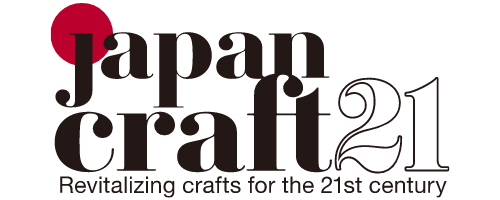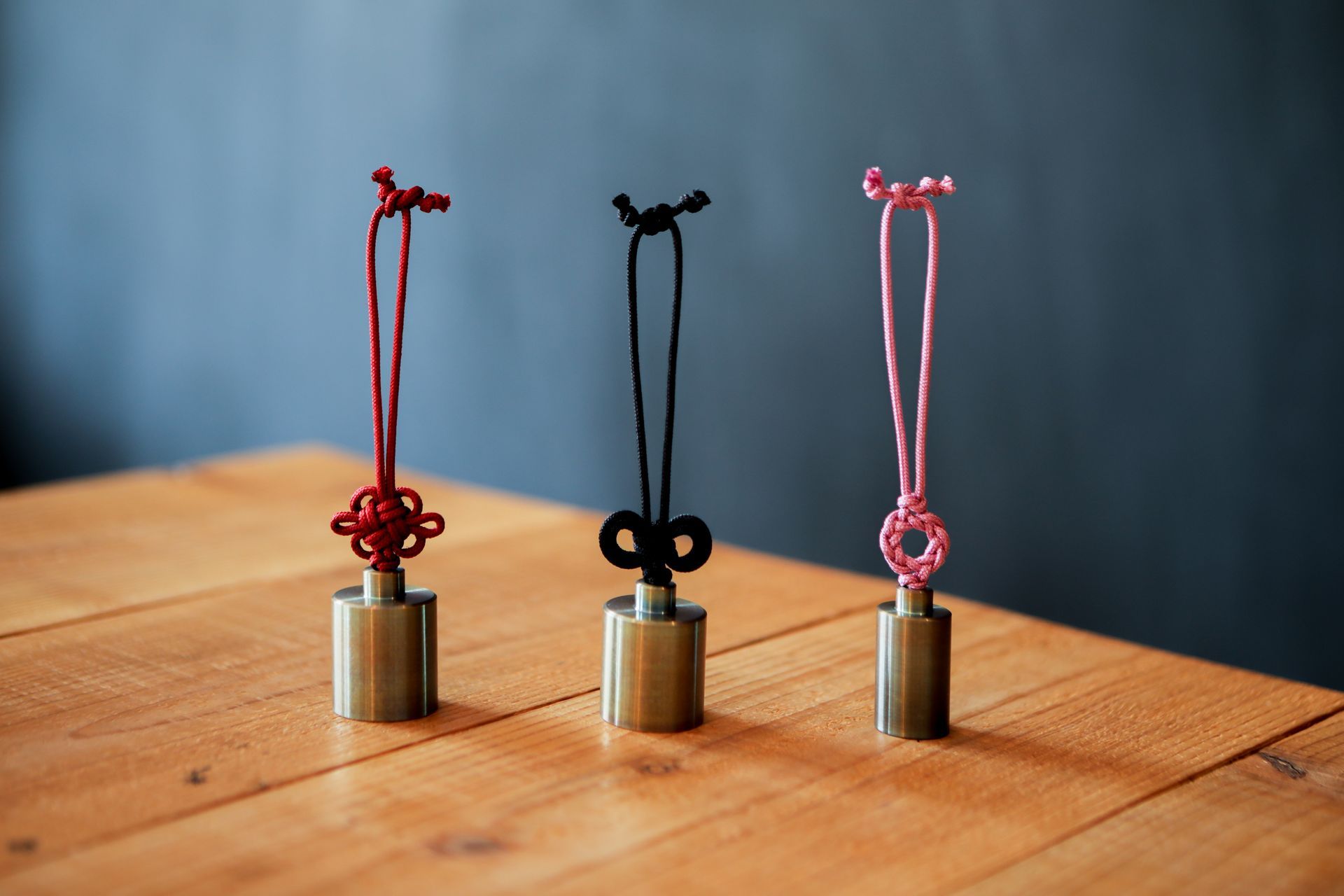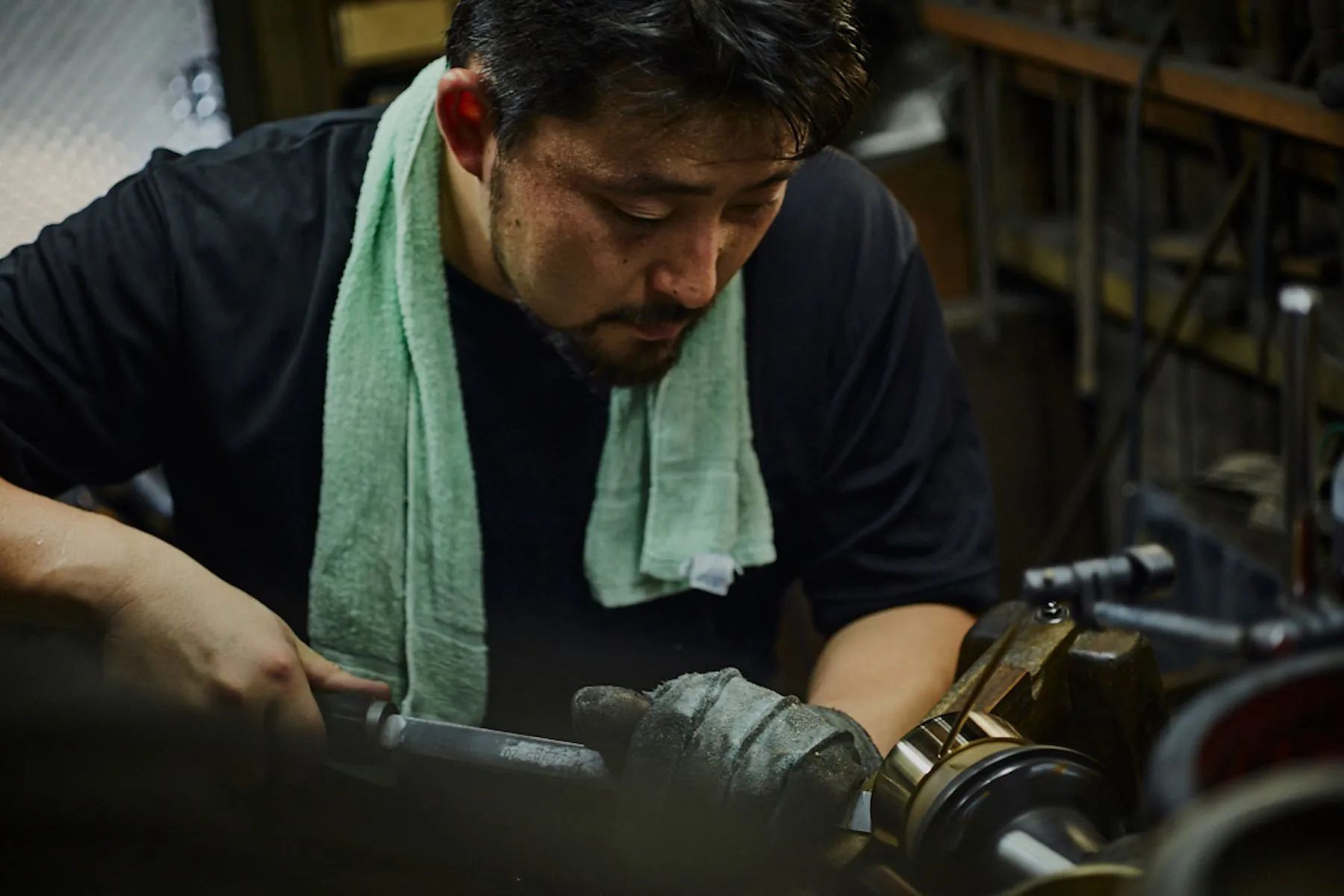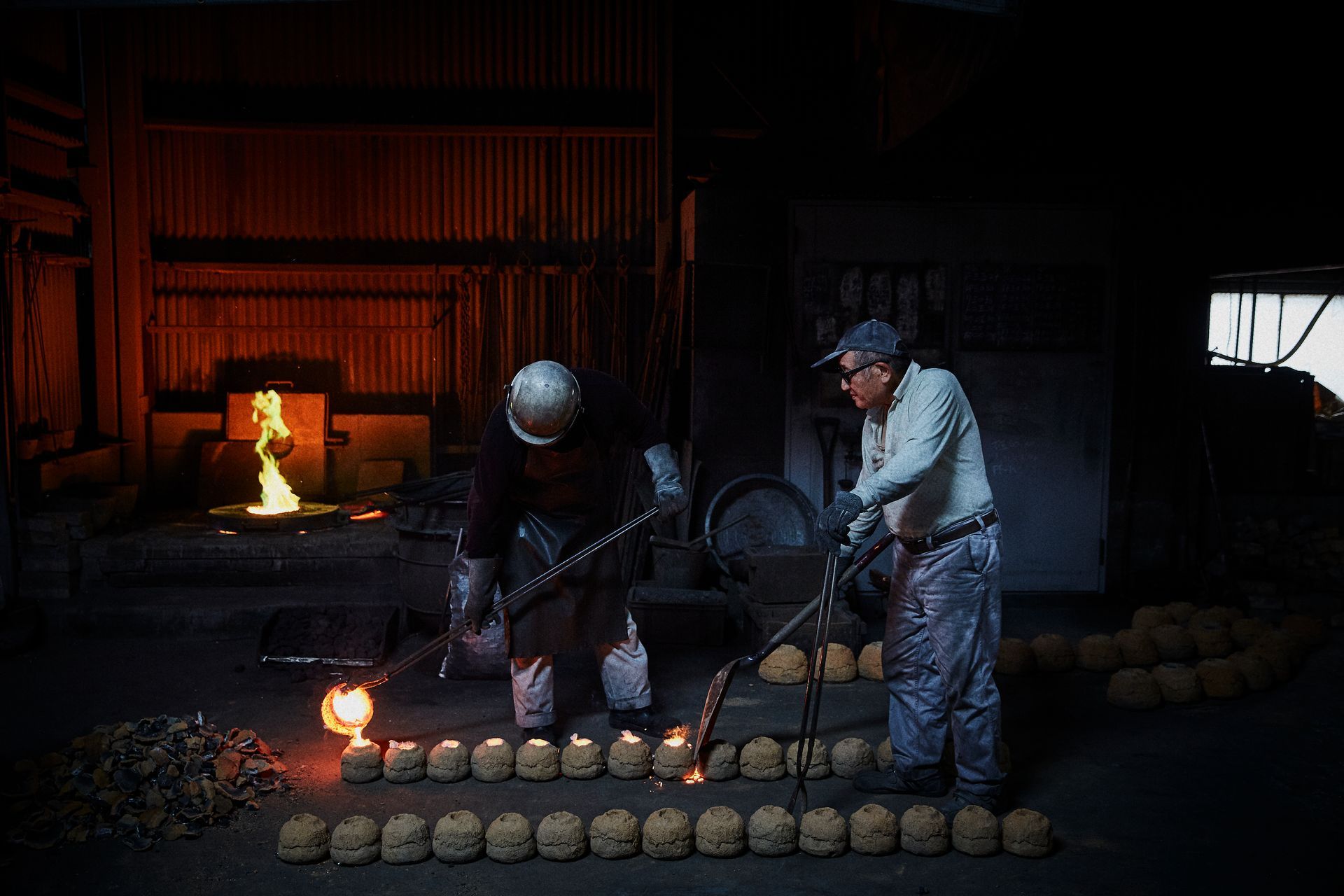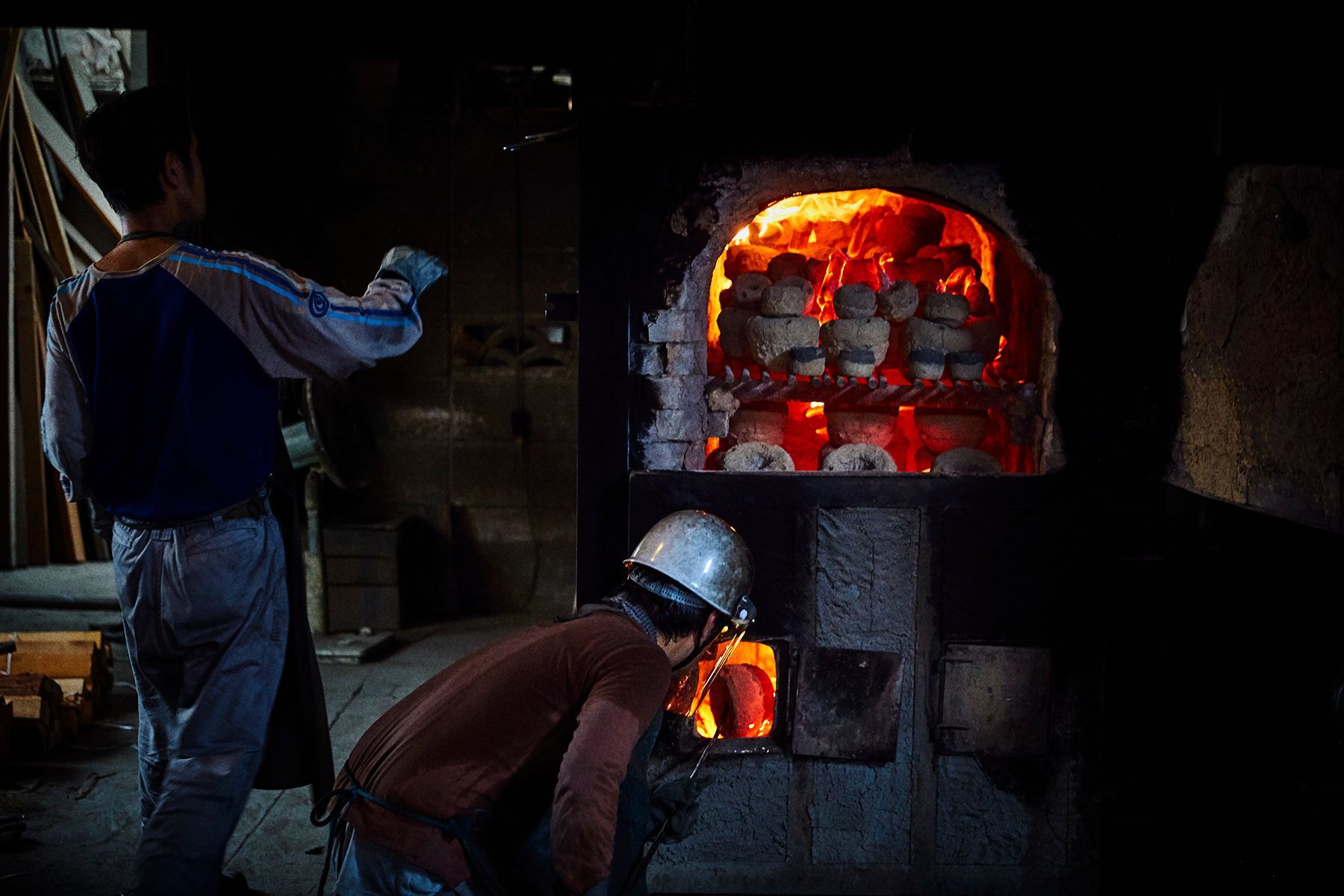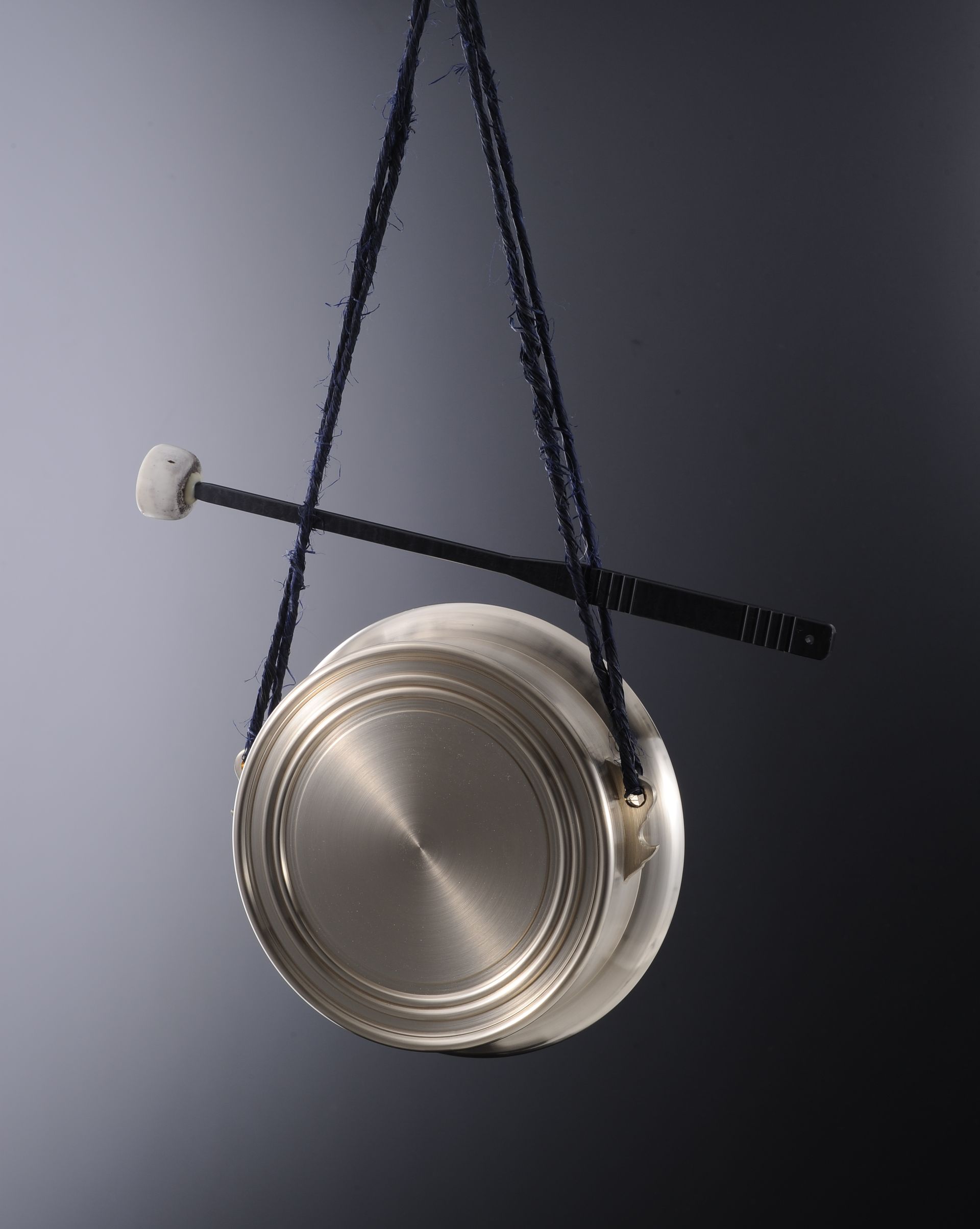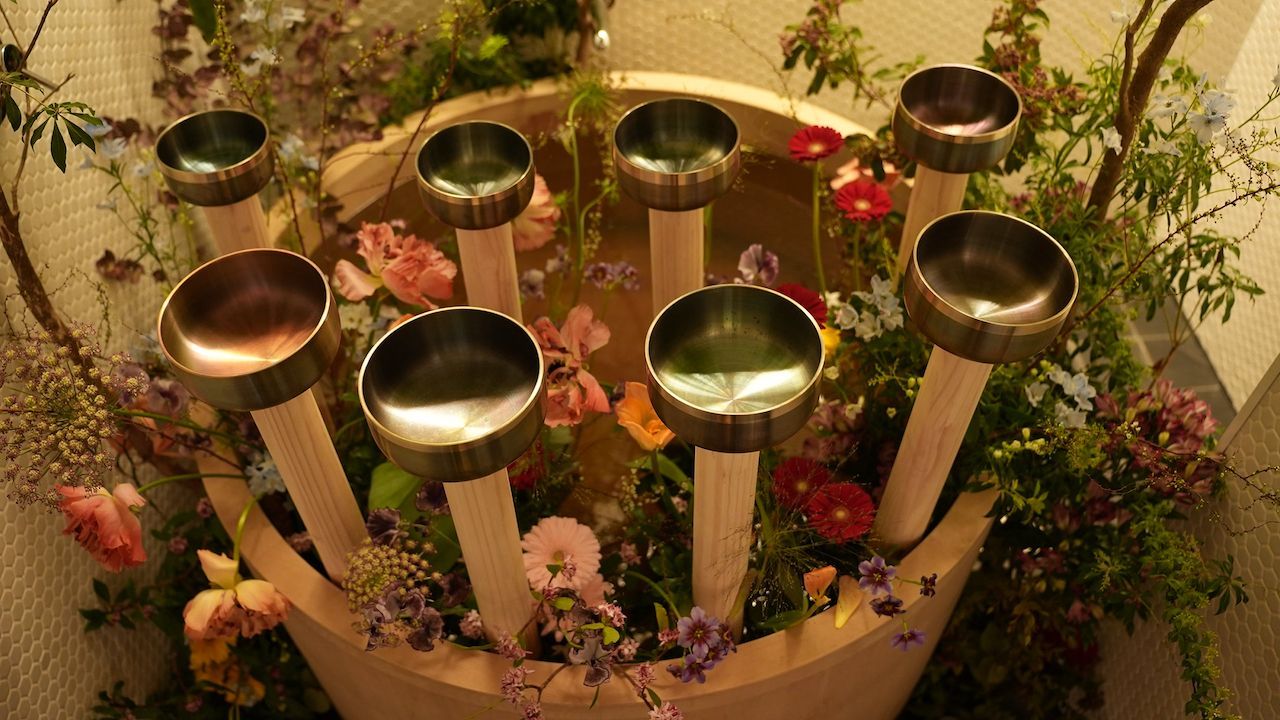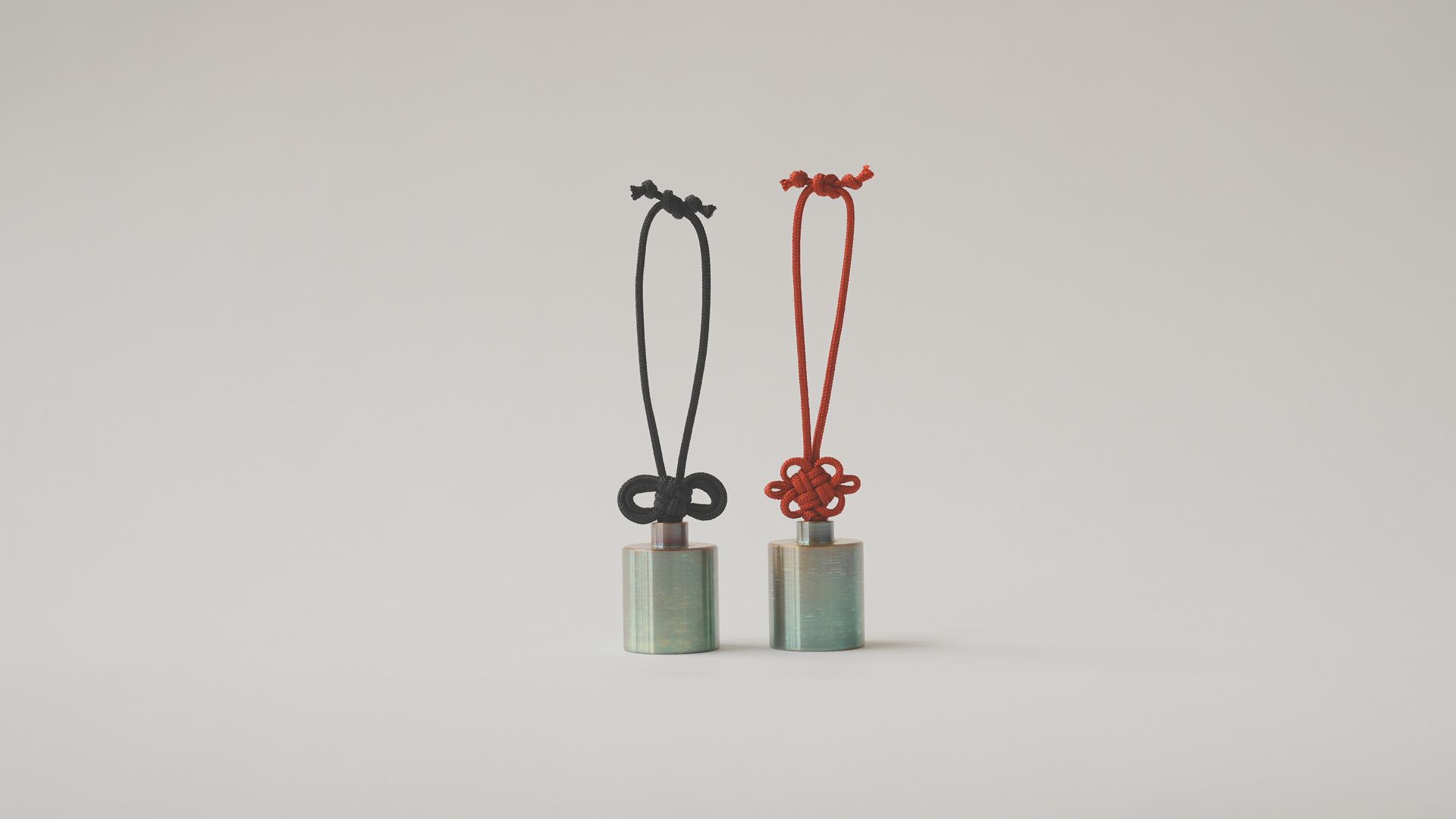This small hanging bell is cast from *Sahari*, a type of bronze alloy with a high tin content. Compared to standard bronze, the increased tin creates a clearer tone and a beautifully sustained reverberation. The hanging cord is made from Kyoto-braided silk and is individually tied using traditional knotting techniques.
Kazuya NANJO
Bells・ Kyoto
-
Artist's Story
Expanding the appeal of traditional Buddhist bells to a broader audience with A passionate commitment to excellence without compromise. One of only two or three remaining bell makers who insist on hand craftsmanship, he is bringing his 200-year old family business into the 21st century with new products for modern living that transcends religious use to include the worlds of art and music as well as activities that support mental well-being. Having already applied to develop a new generation of Buddhist altar bells with a unique tone, By re-invigorating both the craft and the market, we hope to ensure the longevity of traditional bells for future generations of users and makers alike.
-
About the Craft
Orin bowls (bells) have been made in Japan since the 500s, when the methodology came from China. They are cast as a mixture of molten bronze and tin are poured into clay molds, which give shape to both the inner and outer bell. This alloy results in a durable bell with a beautiful sound. Bronze is a soft metal and tin is hard. The hardness of the bell can vary depending on the percentage of the two metals in the blend. The harder the bell, the clearer the sound and the longer the reverberation.
Traditional handmade molds are made by combining sand, clay, and rice husks, resulting in a somewhat porous mold with good airflow that avoids shape and sound-distoring gasses that may become trapped. The molds are then fired in a ceramics kiln.
The combination copper and tin alloy is heated to 1300 degrees C. before being poured into the pre-fired molds.
After cooling, the orin are removed by breaking up the clay molds. Then, each bowl is individually and precisely hand-shaped by carving and polished using a lathe. Craftspeople are careful to minimize the amount of carving so as not to diminish the sound of the bell. Furthermore, attention is paid to monitoring weather conditions and humidity, which can negatively influence the quality of sound.
-
Casting Scene
ButtonTo fully bring out the unique qualities of the ”Sahari" alloy, Nanjo Kobo continues to practice the traditional ”yaki-gata” casting method, in which molds are fired using wood.
Nanjo Kobo is now the only workshop in Japan that still produces Orin using this time-honored technique.
-
Casting Scene
ButtonTo fully bring out the unique qualities of the ”Sahari" alloy, Nanjo Kobo continues to practice the traditional ”yaki-gata” casting method, in which molds are fired using wood.
Nanjo Kobo is now the only workshop in Japan that still produces Orin using this time-honored technique.
-
Yaki-gata Process
ButtonFiring the mold with firewood enables the casting of "Sahari"—Nanjo Kobo original alloy blend—according to the workshop’s unique composition ratio.
-
Cutting Process
ButtonEach Orin is carefully hand-shaped through multiple rounds of cutting and polishing to fine-tune its sound.
The amount and precision of the material removed are crucial for achieving the desired tone.
When tuning is required, the frequency is adjusted by carefully controlling the depth and extent of the cutting.
-
Cutting Process
ButtonEach Orin is carefully hand-shaped through multiple rounds of cutting and polishing to fine-tune its sound.
The amount and precision of the material removed are crucial for achieving the desired tone.
When tuning is required, the frequency is adjusted by carefully controlling the depth and extent of the cutting.
-
7th-generation Kanzaburo Nanjo (Kazuya Nanjo)
ButtonA craftsman with 23 years of experience, he is the only artisan in Japan who continues to create ”Sahari Orin” using the most traditional methods.
-
Button
During the time of the fifth-generation master, Kanzaburo Nanjo, extensive independent research was conducted to further enhance the sound quality of the Orin. This led to the optimization of the alloy composition known as "Sahari", a blend of copper and tin used as the primary material for casting.
The resulting formula has been passed down through generations and ultimately gave rise to the “Kanzaburo Orin”, now considered the signature piece of Nanjo Kobo.
-
Button
The ”Hayashi-gane” is a type of hand-held gong used in Gion Matsuri, one of Kyoto’s most iconic traditional festivals.
During the festival, its distinctive sound can be heard resonating throughout the city.
One of the oldest existing works by Nanjo Kobo is a ”Hayashi-gane” bearing an inscription dated Tenpō 10 (1839), along with the name of its maker, Kanzaburo Nanjo.
Since then, Nanjo Kobo has earned the trust of temples and shrines throughout Kyoto and across Japan, continuing to craft ritual instruments with a deep commitment to the quality and resonance of sound.
-
Button
A new version of traditional Buddhist Orin bowls (bells).
By expanding how and where it is used, new sonic possibilities emerge. Increasingly, people are embracing its resonant tone for meditation, sound baths, and other healing practices that calm and restore the mind and body.
-
Button
A new version of traditional Buddhist Orin bowls (bells).
This set of eight bells were tuned to the frequencies of the seven body chakras plus one above the head.
When multiple bells are played together, their carefully tuned frequencies create harmonious and beautiful chords.
-
Button
A new version of traditional Buddhist Orin bowls (bells).
This set of eight bells were tuned to the frequencies of the seven body chakras plus one above the head.
When multiple bells are played together, their carefully tuned frequencies create harmonious and beautiful chords.
-
Button
A new version of traditional Buddhist Orin bowls (bells).
This set of eight bells were tuned to the frequencies of the seven body chakras plus one above the head.
When multiple bells are played together, their carefully tuned frequencies create harmonious and beautiful chords.
-
Button
A new version of traditional Buddhist Orin bowls (bells).
This set of eight bells were tuned to the frequencies of the seven body chakras plus one above the head.
When multiple bells are played together, their carefully tuned frequencies create harmonious and beautiful chords.
-
Button
This small hanging bell is cast from *Sahari*, a type of bronze alloy with a high tin content. Compared to standard bronze, the increased tin creates a clearer tone and a beautifully sustained reverberation. The hanging cord is made from Kyoto-braided silk and is individually tied using traditional knotting techniques.
-
Button
This small hanging bell is cast from *Sahari*, a type of bronze alloy with a high tin content. Compared to standard bronze, the increased tin creates a clearer tone and a beautifully sustained reverberation. The hanging cord is made from Kyoto-braided silk and is individually tied using traditional knotting techniques.
-
Button
This small hanging bell is cast from *Sahari*, a type of bronze alloy with a high tin content. Compared to standard bronze, the increased tin creates a clearer tone and a beautifully sustained reverberation. The hanging cord is made from Kyoto-braided silk and is individually tied using traditional knotting techniques.
-
Button
This small hanging bell is cast from *Sahari*, a type of bronze alloy with a high tin content. Compared to standard bronze, the increased tin creates a clearer tone and a beautifully sustained reverberation. The hanging cord is made from Kyoto-braided silk and is individually tied using traditional knotting techniques.
-
Button
A new version of traditional Buddhist Orin bowls (bells).
By suspending the bell, this design enhances its clear tone and beautifully long-lasting reverberation.
It also features a design suited to modern lifestyles, offering new possibilities for how the Orin can be used beyond traditional contexts.
-
Button
A new version of traditional Buddhist Orin bowls (bells).
By suspending the bell, this design enhances its clear tone and beautifully long-lasting reverberation.
It also features a design suited to modern lifestyles, offering new possibilities for how the Orin can be used beyond traditional contexts.
-
Button
This Orin bell set was inspired by the "antique cymbals" used in orchestras.
Each bell is tuned to frequencies commonly used in orchestral music, and together they form a complete musical instrument.Mounted on a specially crafted wooden stand, the bells can be played in a variety of ways to suit different performance styles.By changing the tuning of the individual bells, the set can also be adapted for other purposes or musical contexts.
-
Button
LinNe STUDIO is a space where visitors can experience the sound of Orin bells, combining both a shop and a workshop.
Opened in 2023, it was created with the goal of allowing people to learn about traditional craftsmanship through hands-on experiences and tours, discover their favorite tones, and explore new ways to incorporate Orin into modern life.
The studio also offers custom-made sound tuning and semi-custom options for braided silk cords (Kumihimo), tailored to individual preferences and intended uses.
We provide detailed consultations to help customers choose the right tone, pitch, and color to suit their specific needs.
-
Button
LinNe STUDIO is a space where visitors can experience the sound of Orin bells, combining both a shop and a workshop.
Opened in 2023, it was created with the goal of allowing people to learn about traditional craftsmanship through hands-on experiences and tours, discover their favorite tones, and explore new ways to incorporate Orin into modern life.
The studio also offers custom-made sound tuning and semi-custom options for braided silk cords (Kumihimo), tailored to individual preferences and intended uses.
We provide detailed consultations to help customers choose the right tone, pitch, and color to suit their specific needs.
-
Button
LinNe STUDIO is a space where visitors can experience the sound of Orin bells, combining both a shop and a workshop.
Opened in 2023, it was created with the goal of allowing people to learn about traditional craftsmanship through hands-on experiences and tours, discover their favorite tones, and explore new ways to incorporate Orin into modern life.
The studio also offers custom-made sound tuning and semi-custom options for braided silk cords (Kumihimo), tailored to individual preferences and intended uses.
We provide detailed consultations to help customers choose the right tone, pitch, and color to suit their specific needs.
-
Button
LinNe STUDIO is a space where visitors can experience the sound of Orin bells, combining both a shop and a workshop.
Opened in 2023, it was created with the goal of allowing people to learn about traditional craftsmanship through hands-on experiences and tours, discover their favorite tones, and explore new ways to incorporate Orin into modern life.
The studio also offers custom-made sound tuning and semi-custom options for braided silk cords (Kumihimo), tailored to individual preferences and intended uses.
We provide detailed consultations to help customers choose the right tone, pitch, and color to suit their specific needs.
